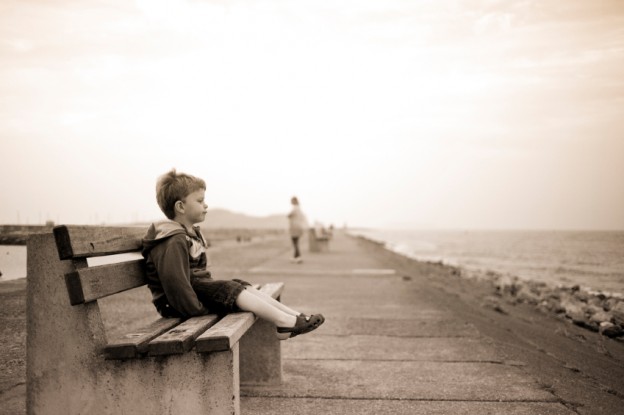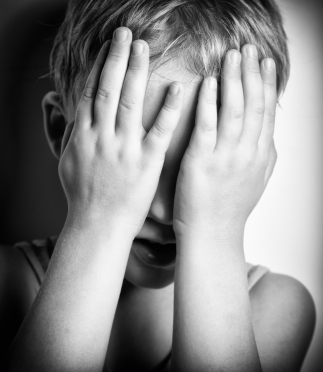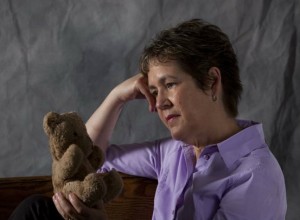
Resources  After our adult son’s treatment for post-traumatic stress disorder with origins in childhood trauma, I wanted to learn more about this common mental illness. I also wanted to find a good working definition of PTSD to share with people curious about our son’s story.
My search began with interviews with several therapists at Intensive Trauma Therapy, the clinic where our son was treated. It expanded into months of reading books by experts in the field. Then, I did more interviews with other nationally recognized trauma experts and therapists. My first “Aha!” moment came when I learned PTSD develops as a result of trauma. That meant I had to take a step back and define trauma from a child’s point of view before trying to do the same with PTSD.
After our adult son’s treatment for post-traumatic stress disorder with origins in childhood trauma, I wanted to learn more about this common mental illness. I also wanted to find a good working definition of PTSD to share with people curious about our son’s story.
My search began with interviews with several therapists at Intensive Trauma Therapy, the clinic where our son was treated. It expanded into months of reading books by experts in the field. Then, I did more interviews with other nationally recognized trauma experts and therapists. My first “Aha!” moment came when I learned PTSD develops as a result of trauma. That meant I had to take a step back and define trauma from a child’s point of view before trying to do the same with PTSD.
What Is Post-Traumatic Stress Disorder in Kids?
 After our adult son’s treatment for post-traumatic stress disorder with origins in childhood trauma, I wanted to learn more about this common mental illness. I also wanted to find a good working definition of PTSD to share with people curious about our son’s story.
My search began with interviews with several therapists at Intensive Trauma Therapy, the clinic where our son was treated. It expanded into months of reading books by experts in the field. Then, I did more interviews with other nationally recognized trauma experts and therapists. My first “Aha!” moment came when I learned PTSD develops as a result of trauma. That meant I had to take a step back and define trauma from a child’s point of view before trying to do the same with PTSD.
After our adult son’s treatment for post-traumatic stress disorder with origins in childhood trauma, I wanted to learn more about this common mental illness. I also wanted to find a good working definition of PTSD to share with people curious about our son’s story.
My search began with interviews with several therapists at Intensive Trauma Therapy, the clinic where our son was treated. It expanded into months of reading books by experts in the field. Then, I did more interviews with other nationally recognized trauma experts and therapists. My first “Aha!” moment came when I learned PTSD develops as a result of trauma. That meant I had to take a step back and define trauma from a child’s point of view before trying to do the same with PTSD.
What Is Trauma?
Peter A. Levine and Maggie Kline, co-authors of Trauma-Proofing Your Kids: A Parents’ Guide for Instilling Confidence, Joy, and Resilience say this about trauma. “Trauma happens when an intense experience stuns a child like a bolt out of the blue; it overwhelms the child, leaving him altered and disconnected from his body, mind, and spirit.” In the book Gentling: A Practical Guide to Treating PTSD in Abused Children, author William E. Krell says, “A trauma is an event that has happened to a person that has had a profound and life-changing effect.” Good definitions, but neither of them are from a child’s perspective. But, Margaret Vasquez, a clinical traumatologist who was traumatized in childhood and treated as a young adult, explains trauma like this. “It’s the scary, painful and yucky stuff that happens.” Her definition shows what trauma is from a kid’s point of view. That’s an important perspective to keep in mind because it’s a reminder that many events adults handle easily can be traumatic for children.What Is PTSD?
With the definition of trauma in hand, I moved on to post-traumatic stress disorder. I learned it is trauma’s bigger, meaner cousin. PTSD occurs when children are unable to dispel the strong emotions and energy caused by their physical response to a traumatic event. What does that mean? Well, after a traumatic event, children need someone to acknowledge the reality of their emotions and physical sensations and to guide them through processes that allow them release pent up energy. Without intervention, a child’s initial response may become trapped in the brain. Once the response is trapped there, a similar, automatic physical and emotional response in the brain can be triggered whenever a threat similar to the first trauma occurs. When those responses continue to be triggered more than three months after the original event, it’s likely that the trauma has developed into PTSD.More Questions about PTSD in Children
Finally, I knew PTSD was unresolved trauma, waiting to spring into action when triggered. But, you know how it goes. The definition led to more questions.- What do kids perceive as scary, painful, or yucky? In other words, what are causes of childhood trauma?
- Why do some kids develop PTSD after trauma but others don’t?
- What are symptoms and warning signs in kids?
- How can it be prevented?
- How can it be treated?



